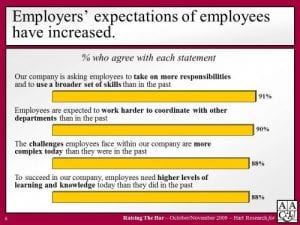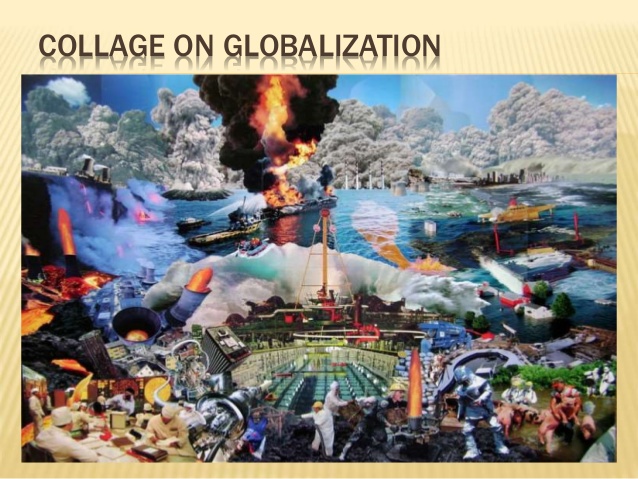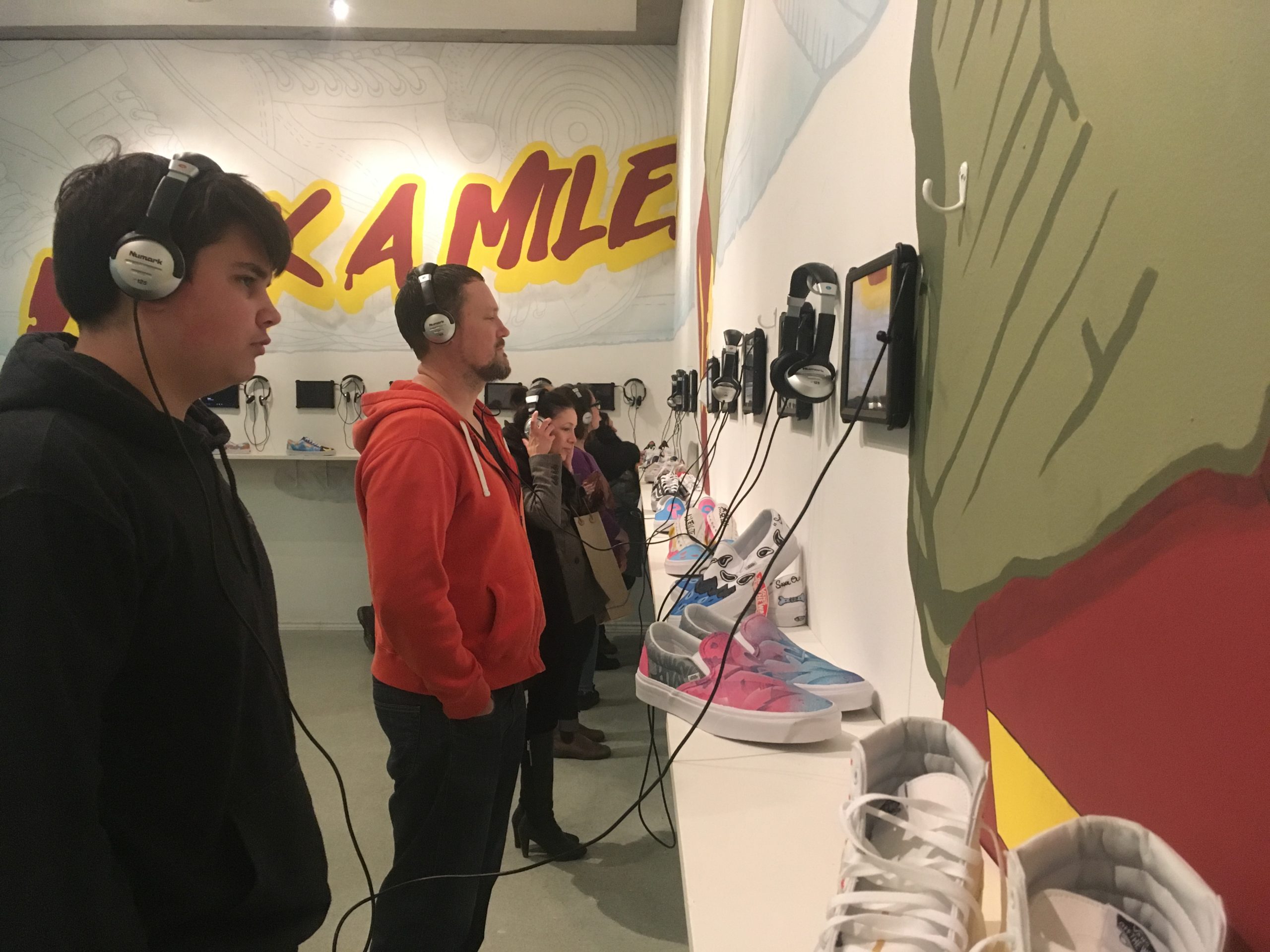
FLICKR UNDER A CC BY-SA 2.0 LICENSE
Our students are living in a period of rapid global, cultural and technological change, all of which impact not only their daily lives, but also their futures. In fact, students today live in a time during which simply being “good” at school is no longer enough to secure our budding workers in our ever-changing workforce! Getting that 98% on your final math exam might no longer translate into an acceptance to a great University with a six figure job at the end of it all. Real-world success is not synonymous with success on Ministry enforced summative assessments, because what you know in the moment is less important than how you learn to adapt to an ever-changing workplace. In this post, I will look at some ways education can be adjusted to get our students ready for this mobile and rapidly shifting world of work.
Doug Harward, CEO of Training Industry, Inc. recently wrote that we are starting to see a shift in the workplace through the millennial generation (born between early 80’s and 2000’s) explaining that, “learning is best achieved in small ongoing increments, over time… using multiple devices, over multiple forms of media… [that] focus on speed and how to make learning efficient and effective” (Harward, 2016). In effect, companies will be hiring our students because of how they learn, not what they know or have learned. This means looking less at post-secondary and university qualifications that put a number on a student and more at looking at the learner as a learner. Adaptive learning is a term which shifts the focus on making the content fit with the learner, as opposed to overwhelming the learner with content. Are we providing enough opportunities for real learning to take place? Are students able to see what they’re learning in their real world?
Traditional education is very top-down, heavy-handed–sit down and read, be quiet, don’t ask questions–there’s still a lot of room for innovation. – Samantha Cole
Another shift is multimodal learning, meaning there are many ways to show what you know, not just an hour long exam at the end of the term. With a growing global view that different humans learn differently, learning situations can be designed over longer periods of time, involving less content, with multiple assessment opportunities throughout the learning experience. Furthermore, these learning experiences are trending towards, “using the principle of storytelling and engagement… to appealing to learner emotions while enhancing learner engagement and recall (Harward, 2016).”
Expect more learning to happen through online education. This trend has only been on the uptake and shows no signs of letting up. Hadley Ferguson, executive director of the Edcamp Foundation, agrees kids will “reach out beyond the walls of their classrooms to interact with other students, other teachers, and renowned authors, scientists, and experts to enhance their learning.” This is a refection of the modern workforce, where collaboration, problem solving, creativity, communication are all fundamental skills that must be developed in response to the flattening of our competitive world. Online or in-person, good education still needs personal relationships that focus on good pedagogy, it’s not just about the latest technologies that make remote learning possible.

created by preet chug
Whatever you may be thinking when you apply for a job today, you can be sure the employer is asking this: Can this person add value every hour, every day – more than a worker in India, a robot or a computer? Can he or she help my company adapt by not only doing the job today but also reinventing the job for tomorrow? – Thomas Friedman, 2009
Our challenge with globalization will intensify for our students. Not only will they be competing for jobs within their community, but globally as well. So preparing our students for an unknown future is no easy task. This competition for jobs applies not only for university graduates, but skill-based employment opportunities as well. This means that all of our students need to become innovative, adaptable, creative, and resilient if they are to find their way in the future. CNN Money recently posted an article entitled, “The new normal: 4 job changes by the time you’re 32,” highlighting this trend that our students may face when they enter the workforce. Are we preparing them for this?
If we see our students as the latest innovators when graduation rolls round, they must have learned how to continually innovate, reinvent themselves, problem-solve, and not end up only an iPhone 3 when iPhone 10, 11, 12 etc… keep pushing the world forward. As Friedman again stated in his prophetic 2009 book, The World is Flat, “being really good at ‘learning how to learn,’ will be an enormous asset in an era of rapid change and innovation, when new jobs will be phased in and old ones phased out faster than ever” (Friedman, 2009)
If we want future ready students we need to be future ready educators. If we value innovation, persistence and creativity, we can create alternative learning environments that support the development of these attributes, focusing more on skills and a holistic global vision. Our students will thank us.
****************************
Cole, Samantha. “5 Big Ways Education Will Change By 2020.” Fast Company, Fast Company, 11 Mar. 2015, www.fastcompany.com/3043387/5-big-ways-education-will-change-by-2020.
Friedman, Thomas L. The World is Flat: A brief history of the twenty-first century. Distributed by Paw Prints/Baker & Taylor, 2009.
Harward, Doug, and Doug Harward Doug Harward is CEO of Training Industry, Inc. and a former learning leader in the high-tech industry. “Key Trends for 2017: Innovation in Educational Technology.” Training Industry, www.trainingindustry.com/magazine/nov-dec-2016/key-trends-for-2017-innovation-in-educational-technology/.
That “it” is job hopping. A new study networking site LinkedIn found that young people really do change jobs a lot more than their parents did. “The new normal: 4 job changes by the time you’re 32.” CNNMoney, Cable News Network. Accessed online on October 25th, 2017
http://money.cnn.com/2016/04/12/news/economy/millennials-change-jobs-frequently/index.html




